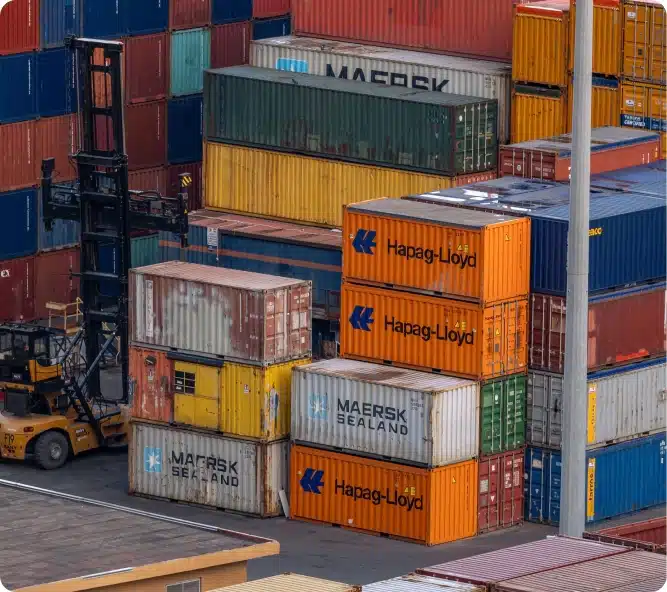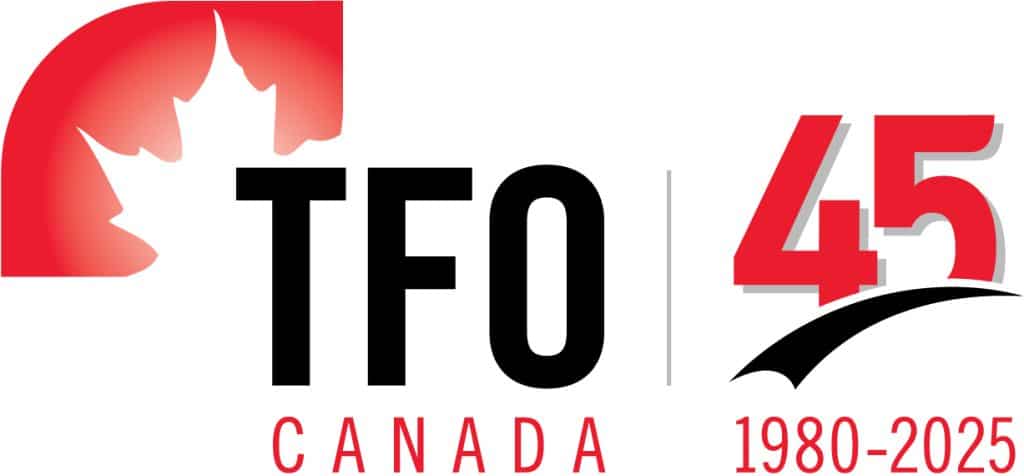CANADIAN BUYERS
TFO Canada’s primary commitment is to assisting exporters in developing and transition economy countries in their endeavours to gain access to new markets such as Canada. A key part of this assistance is the publication of export offers from qualified companies (*) to TFO Canada -registered importers via our “Import Info e-Newsletter”. This activity provides the exporters with a real opportunity to sell in the Canadian market and you, the importer with exposure to new sources of supply.
*We deal with importers that have at least one year experience. We have determined that they are in the best position to utilize this information most effectively and provide the exporters with the best opportunity in the Canadian market.
There is ample support and information available to importers and we encourage you to seek assistance from the organizations and resources listed below.
We do encourage you to review the information regarding importing from developing countries which you can find at the “Importing From Developing Countries” section of this website.
Key Sources of Information for Importers
To learn all aspects necessary in starting, developing and/or growing your import business, please refer to the following key sources of information:
FedDev Ontario – Small Business Services – Link for Importers
Alberta – Small Business Resources Provides general information on international trade visit by clicking here.
A Guide For Canadian Entrepreneurs – A step by step guide to importing
Any business that imports goods into Canada from another country is involved in importing. As in any venture, there is an element of risk, which can be minimized by thorough research and the assistance of experienced service providers. Incorporate importing into a sound business plan, and you will find that importing is just one more way to ensure a successful entrepreneurial venture.
Canadian Border Services Agency (CBSA)
CBSA’s on-line “Step-by-Step Guide to Importing” is a very comprehensive guide that takes you from the basics through to follow-up stages of the importing process.
Guide to Importing Commercial Goods: – Available for free also from CBSA.
Here is an extract from that document (with hyperlinks intact) outlining the Seven Steps that CBSA has outlined for Importing into Canada:
Step 1 – Registering Your Import Business
Step 2 – Reporting Your Shipment
Step 3 – Getting Release of Your Shipment
Step 4 – Examining Your Shipment
Step 5 – Accounting for Your Shipment
Step 6 – Warehousing or Storing Your Shipment
Step 7 – Determinations and Dispute Resolution
Suggested Methods of Sourcing Information
In importing, as with most businesses, accurate information is a vital component of success, whether in the planning or execution stages of one’s business. Here are some methods to find the information necessary to develop your import business.
Trade Statistic Research: Imports To Canada
Go to the Trade Data On-line section of Innovation, Science and Economic Development Canada https://ised-isde.canada.ca/site/ised/en website.
Once there, follow these steps:
Click on “Canadian & US Trade by Product”
i. Under ‘Trade Type” select “Total Imports”;
ii. Under “Trading Partner” select your country of interest or groups or all, as you like;
iii. Under “Product Search” select “Keyword Search”
a. In Key word space enter product or HS Code and click “Search”
b. If the product or sub product that you want is found click “Add Codes to selection List”. Keep adding as many codes (products) as you want via the last steps. When finished (i.e. complete list) click “Return to Main Panel”
2. Fill “Show Individually” hole to left
3. Click “Run Report”
Note: There are many other aspects to this tool which you will find as you practice with it, including Province by Province breakdown of imports.
Tariff Information
(Note: There is no Canadian tariff on any products from LDC countries except for dairy, poultry and egg products.)
You will find tariff rates at the Most Recent Customs Tariff section of the
Canadian Border Services Agency (www.cbsa-asfc.gc.ca) website. Proceed as follows:
Finding your Products HS Code
Note: Due to the complex nature of HS Coding, we cannot guarantee the accuracy of the information obtained using the methods outlined below. To verify your HS Code, you can contact the CBSA directly (Contacts found at the Key Contacts or CBSA Offices sections of their website (www.cbsa-asfc.gc.ca). By providing them full details of your product and HS Code, they should be able to verify that the matching HS Code is correct, as well as indicate any other possible factors regarding the admissibility of your product into Canada (Import Controls, safety requirements, quota restrictions, etc.).
To determine your product’s HS Code proceed as follows:
1. Go to: https://ised-isde.canada.ca/site/ised/en
2. Click “Directories of Canadian Companies”
3. Click “Canadian Importers Database”
4. Click “Search by Product”
Proceed to:
- “Option 1: Search by Keyword” – Input keyword(s) for your product and click “Search”. The product should come up along with matching HS Code. If not try other wording in “Keyword Search”.
OR
- “Option 3: Browse list of products. Choose ONE section or chapter to browse” – Select Product category closest to your product and click “Browse”. Scroll down through products until you find yours and the matching HS Code.
Note: In both Options, you can find more specific products by clicking on “Drilldown to HS10 Product Code Level”. You can also view importer information by clicking on “Generate Report” and source country information by clicking on “List Countries of Origin”.
For food products specifically, another method for finding HS Codes (again, we cannot guarantee the accuracy of information retrieved here) and related information is the “AUTOMATED IMPORT REFERENCE SYSTEM (AIRS)” of the CFIA – Canadian Food Inspection Agency. You can find this easy-to-use System at https://inspection.canada.ca/importing-food-plants-or-animals/plant-and-plant-product-imports/airs/eng/1300127512994/1300127627409
Trade Show Information
Trade Shows for various products/industries can be a great way to find useful market information and contacts. To locate websites for particular sector Events, go to www.tsnn.com and/or tradeshowbiz.ca.
FedDev Ontario – Small Business Services link for Importers.
8 tips for dealing with foreign suppliers: (Source: Business Development Bank of Canada)
1. What is the company’s history?
Put research skills to good use to obtain information about the supplier’s reputation and background.
2. What do you know about the key personnel?
All relationships are new at some point and it takes time to reach a level of comfort. Take the necessary time to find out if the supplier is new to the business or an established player. Ask for references and follow up on them. If a supplier has nothing to hide, he or she will not be upset by a few questions.
3. Does the supplier have experience with Canadian companies?
If possible, seek out any Canadian businesses that have worked with the supplier. Ask them about their experiences, both positive and negative.
4. Does the supplier have a sound financial history?
While access to information varies from country to country, it is often possible to determine whether a company has had financial difficulties. A financially challenged supplier can create unwanted challenges for exporters.
5. What is the operational capacity of the supplier?
It is important to work with a supplier that can meet and grow with exporter demands. Take the time to ask about the supplier’s facilities and capabilities.
6. What terms and pricing are they offering?
In most business sectors, there are competing firms. If one supplier seems unreasonably expensive, there is nothing preventing buyers from conducting some price comparisons. Ultimately, the costs associated with suppliers must be in line with financial projections in the overall business plan.
7. Are they prepared to offer any additional support?
All business relationships should be mutually supportive. It is important to feel that a foreign supplier has the buyer’s best interests in mind. Whether it is a co-promotional opportunity or an unexpected change to an order, it is reassuring to know that a supplier will work with buyers, not against them.
CANADIAN BUYERS
TFO Canada’s primary commitment is to assisting exporters in developing and transition economy countries in their endeavours to gain access to new markets such as Canada. A key part of this assistance is the publication of export offers from qualified companies (*) to TFO Canada -registered importers via our “Import Info e-Newsletter”. This activity provides the exporters with a real opportunity to sell in the Canadian market and you, the importer with exposure to new sources of supply.
We deal with importers that have at least one year experience. We have determined that they are in the best position to utilize this information most effectively and provide the exporters with the best opportunity in the Canadian market.


There is ample support and information available to importers and we encourage you to seek assistance from the organizations and resources listed below.
We do encourage you to review the information regarding importing from developing countries which you can find at the “Importing From Developing Countries” section of this website.

Key Sources of Information for Importers
To learn all aspects necessary in starting, developing and/or growing your import business, please refer to the following key sources of information:
FedDev Ontario – Small Business Services – Link for Importers
Alberta – Small Business Resources Provides general information on international trade visit by clicking here.
A Guide For Canadian Entrepreneurs – A step by step guide to importing
Any business that imports goods into Canada from another country is involved in importing. As in any venture, there is an element of risk, which can be minimized by thorough research and the assistance of experienced service providers. Incorporate importing into a sound business plan, and you will find that importing is just one more way to ensure a successful entrepreneurial venture.
Canadian Border Services Agency (CBSA)
CBSA’s on-line “Step-by-Step Guide to Importing” is a very comprehensive guide that takes you from the basics through to follow-up stages of the importing process.

Guide to Importing Commercial Goods: – Available for free also from CBSA.
Here is an extract from that document (with hyperlinks intact) outlining the Seven Steps that CBSA has outlined for Importing into Canada:

Suggested Methods of Sourcing Information
In importing, as with most businesses, accurate information is a vital component of success, whether in the planning or execution stages of one’s business. Here are some methods to find the information necessary to develop your import business.
Trade Statistic Research: Imports To Canada Go to the Trade Data On-line section of Innovation, Science and Economic Development Canada https://ised-isde.canada.ca/site/ised/en website.

Once there, follow these steps:
Click on “Canadian & US Trade by Product”
i. Under ‘Trade Type” select “Total Imports”
ii. Under “Trading Partner” select your country of interest or groups or all, as you like;
iii. Under “Product Search” select “Keyword Search”
a. In Key word space enter product or HS Code and click “Search”
b. If the product or sub product that you want is found click “Add Codes to selection List”. Keep adding as many codes (products) as you want via the last steps. When finished (i.e. complete list) click “Return to Main Panel”
2. Fill “Show Individually” hole to left
3. Click “Run Report”
Note: There are many other aspects to this tool which you will find as you practice with it, including Province by Province breakdown of imports.
Tariff Information
Note: There is no Canadian tariff on any products from LDC countries except for dairy, poultry and egg products. You will find tariff rates at the Most Recent Customs Tariff section of the
Canadian Border Services Agency (www.cbsa-asfc.gc.ca) website. Proceed as follows:
Finding your Products HS Code
Note: Due to the complex nature of HS Coding, we cannot guarantee the accuracy of the information obtained using the methods outlined below. To verify your HS Code, you can contact the CBSA directly (Contacts found at the Key Contacts or CBSA Offices sections of their website (www.cbsa-asfc.gc.ca). By providing them full details of your product and HS Code, they should be able to verify that the matching HS Code is correct, as well as indicate any other possible factors regarding the admissibility of your product into Canada (Import Controls, safety requirements, quota restrictions, etc.).
To determine your product’s HS Code proceed as follows:
1-Go to:
https://ised-isde.canada.ca/site/ised/en
2-Click:
Directories of Canadian Companies
3-Click:
4-Click:
Proceed to:
Option 1
Search by Keyword” – Input keyword(s) for your product and click “Search”. The product should come up along with matching HS Code. If not try other wording in “Keyword Search”.
Option 3
Browse list of products. Choose ONE section or chapter to browse” – Select Product category closest to your product and click “Browse”. Scroll down through products until you find yours and the matching HS Code.
Note: In both Options, you can find more specific products by clicking on “Drilldown to HS10 Product Code Level”. You can also view importer information by clicking on “Generate Report” and source country information by clicking on “List Countries of Origin”.
For food products specifically:
another method for finding HS Codes (again, we cannot guarantee the accuracy of information retrieved here) and related information is the “AUTOMATED IMPORT REFERENCE SYSTEM (AIRS)” of the CFIA – Canadian Food Inspection Agency. You can find this easy-to-use System at https://inspection.canada.ca/importing-food-plants-or-animals/plant-and-plant-product-imports/airs/eng/1300127512994/1300127627409\
Trade Show Information
Trade Shows for various products/industries can be a great way to find useful market information and contacts. To locate websites for particular sector Events, go to www.tsnn.com and/or tradeshowbiz.ca.
FedDev Ontario – Small Business Services link for Importers.

(Source: Business Development Bank of Canada)
1. What is the company’s history?
Put research skills to good use to obtain information about the supplier’s reputation and background.
2. What do you know about the key personnel?
All relationships are new at some point and it takes time to reach a level of comfort. Take the necessary time to find out if the supplier is new to the business or an established player. Ask for references and follow up on them. If a supplier has nothing to hide, he or she will not be upset by a few questions.
3. Does the supplier have experience with Canadian companies?
If possible, seek out any Canadian businesses that have worked with the supplier. Ask them about their experiences, both positive and negative.
4. Does the supplier have a sound financial history?
While access to information varies from country to country, it is often possible to determine whether a company has had financial difficulties. A financially challenged supplier can create unwanted challenges for exporters.
5. What is the operational capacity of the supplier?
It is important to work with a supplier that can meet and grow with exporter demands. Take the time to ask about the supplier’s facilities and capabilities.
6. What terms and pricing are they offering?
In most business sectors, there are competing firms. If one supplier seems unreasonably expensive, there is nothing preventing buyers from conducting some price comparisons. Ultimately, the costs associated with suppliers must be in line with financial projections in the overall business plan.
7. Are they prepared to offer any additional support?
All business relationships should be mutually supportive. It is important to feel that a foreign supplier has the buyer’s best interests in mind. Whether it is a co-promotional opportunity or an unexpected change to an order, it is reassuring to know that a supplier will work with buyers, not against them.

